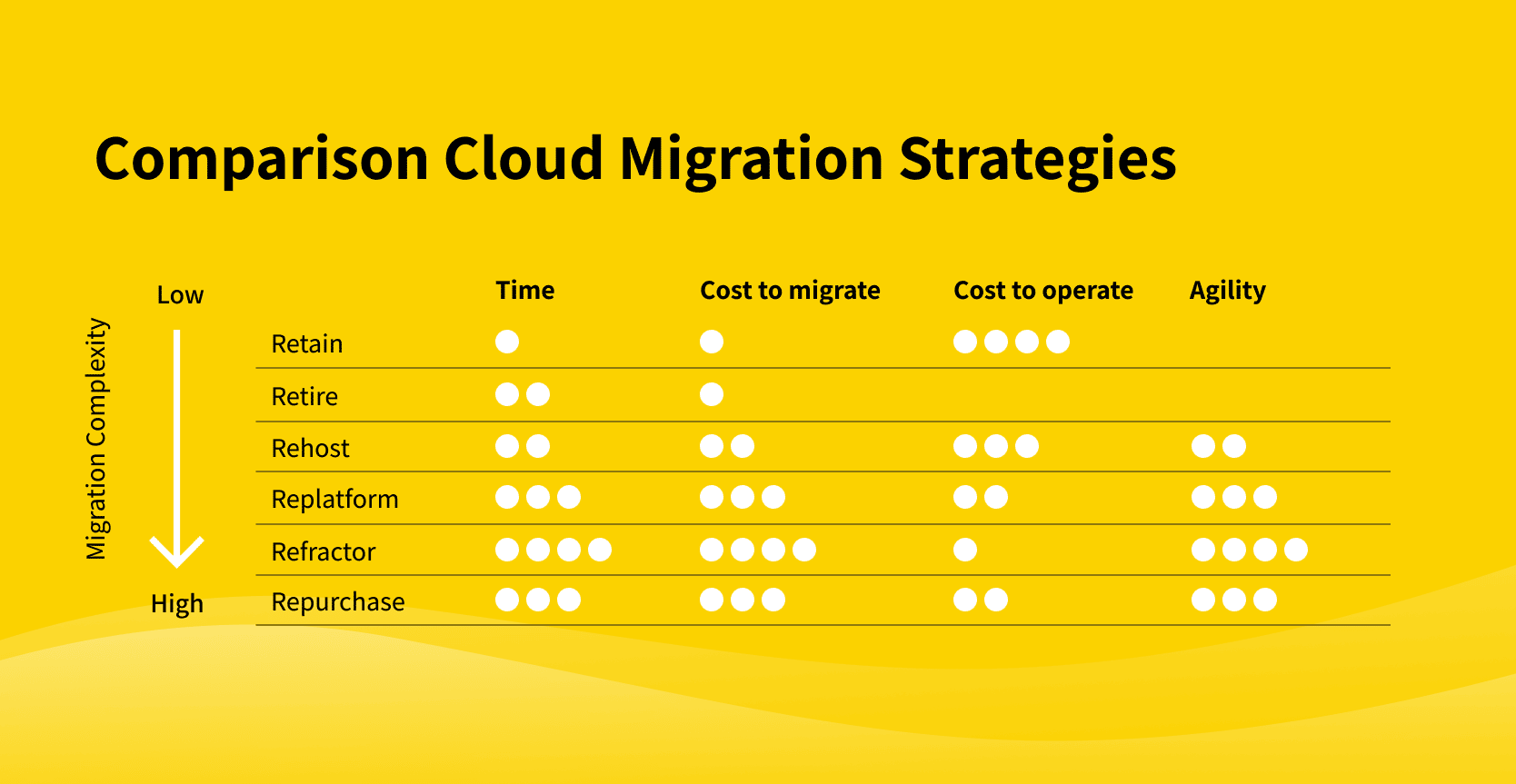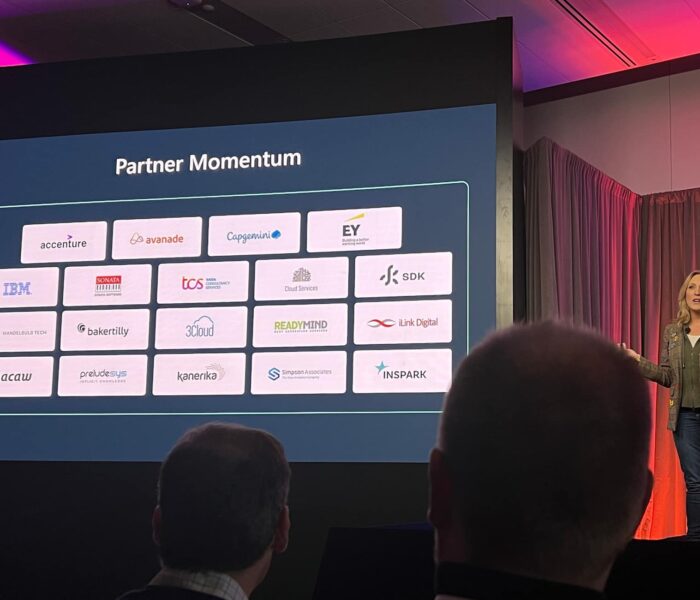The benefits of App Innovation are abundantly clear. Maintaining software licenses is costly for an organization and all the necessary technical knowledge isn’t always available in-house. Also, updates often need to be performed manually. A workplace in the cloud requires hardly any maintenance, because the online software is updated automatically. With App Innovation, the administrator can spend less time on the technicalities and focus more on ensuring that the service provides added value for the company.
It would be quite some organization that could still hold out against the cloud. In recent years, the exodus to the cloud has swollen to enormous proportions. However, the shift is mainly approached in terms of infrastructure: the network goes to the cloud, and servers are moved to virtual machines. The applications tend to be forgotten. Often, they simply move with everything else; but without the right approach, optimal use will not be made of the transition to the cloud. There are many benefits to be gained from arranging apps properly. If suitable care is taken over them and they are equipped with cloud-native technology, they can be made – and kept – more scalable, manageable and cost-effective. You can also read more about these basic principles of App Innovation in the white paper Making Your Application Landscape Future-Ready
Half-migrating applications from on-premises to the cloud can completely negate their financial and practical benefits, in both the short and the long term. Any cloud migration roadmap should therefore define a clear migration strategy for each app. In this assessment, an organization should look not just at technical aspects, but also at business, security and compliance. The chosen strategy has a fundamental impact on the expected migration effort, the potential benefits of using the cloud and possible long-term cost savings of the new operating model.
Compliance and security are often cited as goals for a move to the cloud. But this switch alone doesn’t necessarily mean that your apps will also be manageable and compliant. Because of the strong focus on infrastructure during the migration, the organization doesn’t always realize that problems can arise with its apps.
The next steps are often forgotten or skipped for cost reasons. Just because apps run on a virtual machine doesn’t mean they’re efficient. Always take a critical look at the design of the application landscape.
De 6 Rs of App Innovation
To guide this process properly and optimize the transition to the cloud, we’ve identified 6 Rs. Each R is a possible migration strategy for your apps. Each R represents a scenario that is potentially relevant to any app. We examine which scenario suits the apps best, creating a balanced application landscape. The 6 Rs are:
- Rehost. This is usually the most obvious and easy solution. Many companies ‘lift & shift’: the app is picked up and no longer runs on a local server, but on a virtual machine in the cloud.
- Replatform. Briefly: ‘lift and evolve’. Part of the app goes cloud-native. We also call this the golden mean: things will be done in a cloud-native way if it’s easy to do so. The rest will remain as it was before the app moved to the cloud.
- Repurchase. Can we replace the app with another existing app? An application in the landscape may have become outdated. Perhaps the services in question could also be supported by a new app with more options. If so, it could be advantageous to make a different package selection or opt for a SaaS variant.
- Retire. This seems like an easy step: for example, the app has few users left, so dismantling it has a low impact on the user experience, but produces significant cost savings.
- Retain. This is the easiest scenario: the app works fine, so nobody needs to touch it. It stays as it is.
- Refactor. This is the most drastic scenario, and often relates to the distinctive apps that support the organization’s USPs. It is especially applicable to business-critical apps for which no standard SaaS solutions are available. In fact, these are therefore always bespoke apps, where scalability is extremely important. These apps may need to be redesigned when they move to the cloud in order to take full advantage of cloud-native features.
App Innovation: Macaw’s Approach
We map out your application landscape using these six scenarios. We measure each app against the yardstick of the 6 Rs. Depending on technical and business characteristics, we determine the best way to continue an app’s life cycle. Or discontinue it, because that is also a possibility.
After compiling this inventory we draw up a plan: What should be done with the apps in the years ahead to ensure that your business is better supported, costs are reduced and the apps are compliant? Many organizations can easily have a hundred apps; multinationals may have thousands. We put the customer in a position to manage the apps itself. We believe that an organization should not be dependent on external consultancy for its distinctive apps – they are simply too unique for the organization not to manage and develop itself. We want to help organizations move to the cloud in a responsible manner.
We analyze the organization in one or more business workshops. We look at the business objectives from various angles, including marketing, sales and strategy, peeling away the different layers until we get to the IT landscape. In doing so, we initially focus on the apps that make the organization unique. It is these apps in particular that must be cloud-native, compliant and scalable.
Once the objectives have been formulated, we move on to technical sessions. We draw up an inventory of apps: are they tailormade, SaaS or some other form? We analyze them to determine whether they are cloud-ready. Using the 6 Rs, we work out what should happen to each app.
Pros and Cons of Each R
Each scenario in App Innovation has advantages and disadvantages, which you can weigh up against each other.
Rehost
Rehosting works well when migrating from a legacy landscape, for example. In the short term it cuts costs, but in the long term the cloud often costs more, due to factors such as storage, processor ticks and costs of virtual machines. Simply grabbing your old stuff and putting it in the cloud can also have an impact on performance, which may deteriorate.
Replatform
This scenario cannot be seen as an optimization, and it remains non-scalable in some elements. However, it does deliver quick, tangible results without the need for too many changes to the architecture. For example, database-intensive work can be placed in the cloud, while the front end remains on-premise.
Repurchase
This can be summed up as ‘drop & shop’: throw the app overboard and build or buy a new one. It’s a good solution for older applications that are no longer well supported. On the other hand, it is also a drastic step, because you are starting from scratch and probably also have to do a data migration.
Retire
Actually stopping apps is the most painful step. Yes, you save time which you can then spend on something else. That sounds simple, but it can be difficult to identify which apps can be shut down. There is a danger of ending an app too early. However, especially in companies that are performing or undergoing a takeover, the apps that can be discontinued can be identified. This requires decisiveness from the team, which needs to come up with a good reason why the app should be ended. For example, there may still be a small group of users who protest strongly against this.
Retain
Some apps are simply not suitable for the cloud. For example, apps that monitor the production line in factories do not necessarily have to be in the cloud; they work fine in on-premise form. Again, apps that orchestrate error detection can also remain outside the cloud. With these, speed is of the essence, and moving to the cloud may cause that millisecond delay that means that the app no longer functions well.
Refactor
The advantages: the app is completely optimized for the cloud in this way, and becomes scalable and more cost-efficient. But this involves implementing a new app, which means that development and management costs are incurred. That is mainly an investment at the start: in the long term these costs are more reasonable.
Taking the next step
Would you like to exchange ideas or receive some advice about modernizing your app landscape? Our experts will be happy to help you with an Application Landscape Assessment, for example. Contact us by phone or use the digital contact form to leave your details. We love challenges!








